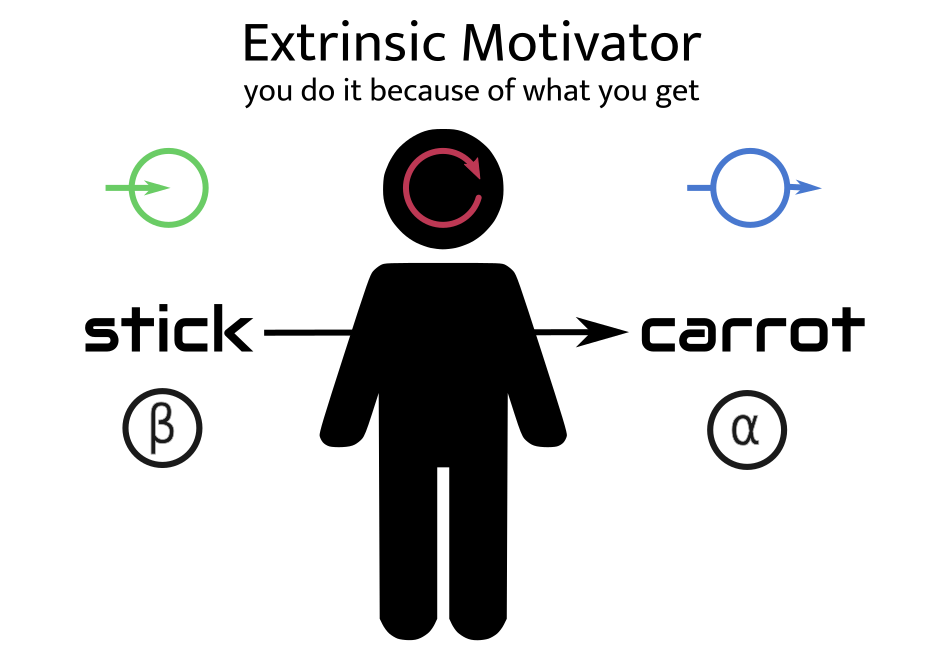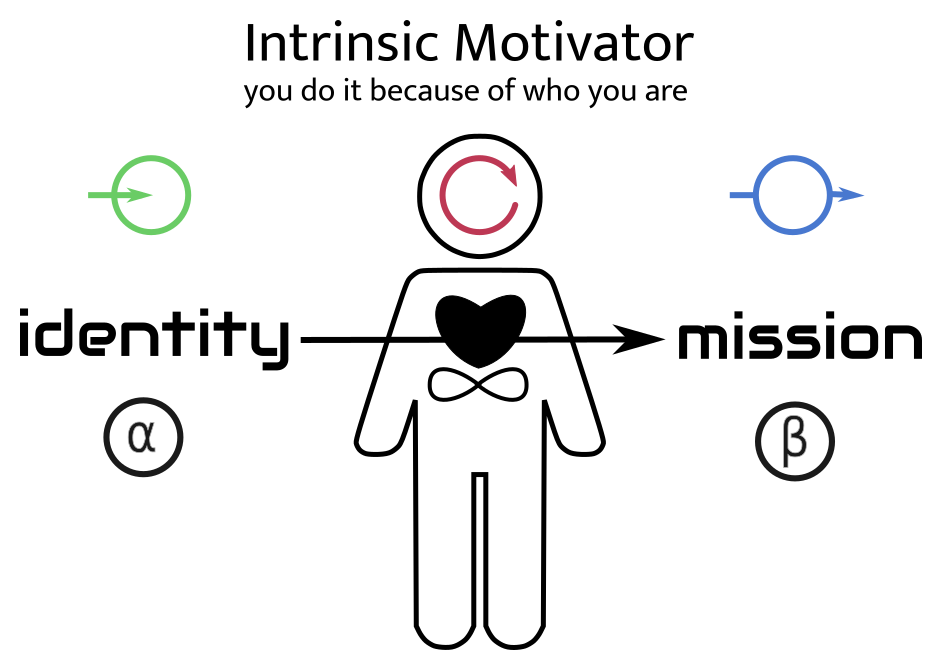Extrinsic vs Intrinsic Motivators
Extrinsic vs Intrinsic Motivators explains how external motivators (extrinsic) and internal motivators (intrinsic) differ in their nature, qualities, effects, and proper usage.

Extrinsic Motivator: action is motivated from outside the person; they do it to get a reward (carrot) or avoid a consequence (stick).
PROS
- easy to initiate
- simple (transactional)
- low capacity OK
CONS
- motivation does not engage internally
- incentives have mixed-up energy
- short term
- maintains status quo

Intrinsic Motivator: action is motivated from inside the person; they do it because of who they are (identity) and they benefit that can provide to others (mission).
PROS
- engages internally
- incentives have same energy
- resilient
- long term
- transformational
CONS
- requires investment to initiate
- complex
- demands capacity
Extrinsic motivator: While this motivation is easier to initiate because it is based on a clear transaction, there are two key weaknesses: (1) the motivator does not engage the person internally; they may do it for any private reason to get the reward or avoid the consequence. (2) the motivator has the opposite felt force in relation to its role: i.e. the carrot is in the Drive/pull role, yet since it is positive, it is felt stronger as a push-force. This leads to minimal performance to achieve the reward.
Intrinsic motivators always build capacity because the person must become the change they are producing.

